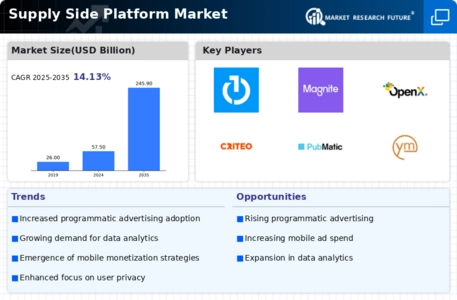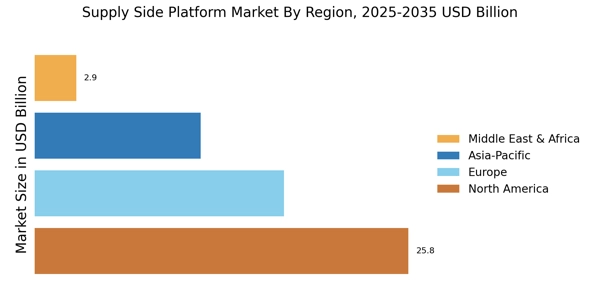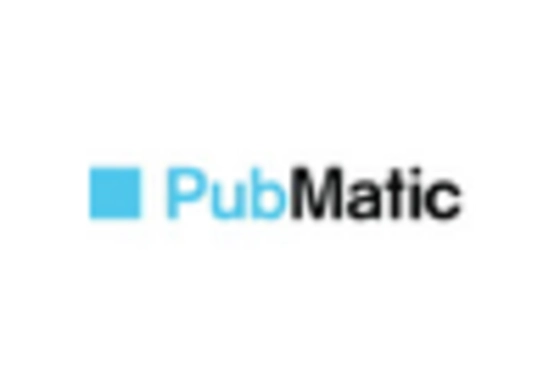The Supply Side Platform Market (SSP) Market is currently characterized by a dynamic competitive landscape, driven by rapid technological advancements and evolving consumer behaviors. Key players such as Google (US), Amazon (US), and PubMatic (US) are at the forefront, leveraging their extensive data capabilities and innovative technologies to enhance their market positioning. Google (US) focuses on integrating artificial intelligence into its advertising solutions, thereby optimizing ad placements and improving yield for publishers. Meanwhile, Amazon (US) is expanding its SSP capabilities through strategic partnerships, enhancing its reach within the digital advertising ecosystem. PubMatic (US), on the other hand, emphasizes transparency and data-driven insights, which resonate well with publishers seeking to maximize revenue while maintaining control over their inventory. Collectively, these strategies contribute to a competitive environment that is increasingly centered around technological innovation and data utilization.
The business tactics employed by these companies reflect a nuanced understanding of market demands. For instance, localizing services to cater to regional preferences and optimizing supply chains for efficiency are prevalent strategies. The market structure appears moderately fragmented, with a mix of established players and emerging startups. This fragmentation allows for diverse offerings, yet the influence of major players like Google (US) and Amazon (US) remains substantial, shaping industry standards and practices.
In August 2025, Google (US) announced the launch of its new AI-driven ad optimization tool, which aims to enhance the efficiency of ad placements across its SSP. This strategic move is significant as it not only reinforces Google's commitment to innovation but also positions it to capture a larger share of the market by providing publishers with advanced tools to maximize their advertising revenue. The integration of AI into ad operations is likely to set a new benchmark for performance in the industry.
In September 2025, Amazon (US) expanded its advertising capabilities by acquiring a smaller SSP, thereby enhancing its technological infrastructure and broadening its service offerings. This acquisition is indicative of Amazon's strategy to solidify its presence in the digital advertising space, allowing it to compete more effectively against established players. The move is expected to facilitate better integration of Amazon's retail data with advertising solutions, creating a more cohesive ecosystem for advertisers and publishers alike.
In July 2025, PubMatic (US) launched a new transparency initiative aimed at providing publishers with deeper insights into their ad performance metrics. This initiative is crucial as it addresses growing concerns regarding data privacy and transparency in the advertising sector. By prioritizing transparency, PubMatic (US) not only enhances its value proposition but also builds trust with its clients, which is increasingly important in today's market.
As of October 2025, the competitive trends within the SSP market are heavily influenced by digitalization, sustainability, and the integration of artificial intelligence. Strategic alliances are becoming more prevalent, as companies recognize the need to collaborate to enhance their technological capabilities and market reach. Looking ahead, it appears that competitive differentiation will increasingly hinge on innovation, technological advancements, and the reliability of supply chains, rather than merely on price. This shift suggests a transformative phase in the SSP market, where companies that prioritize technological integration and sustainable practices are likely to emerge as leaders.

















Leave a Comment